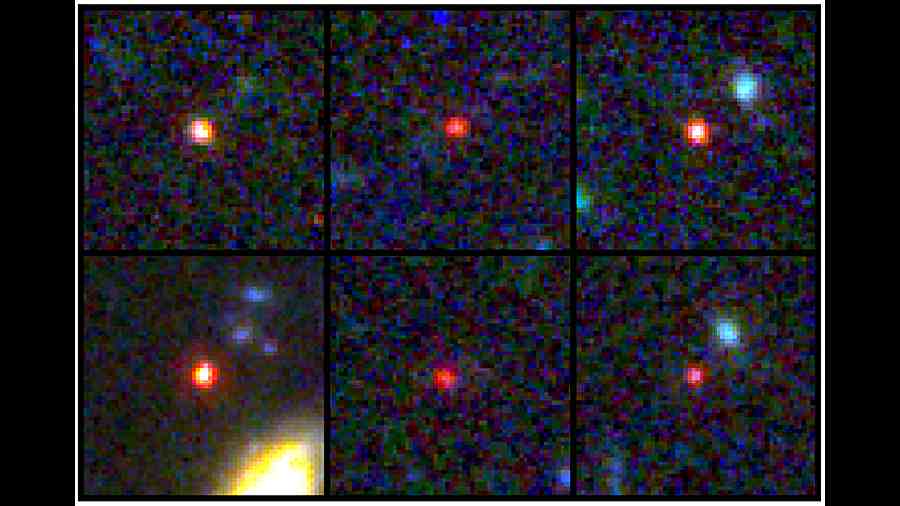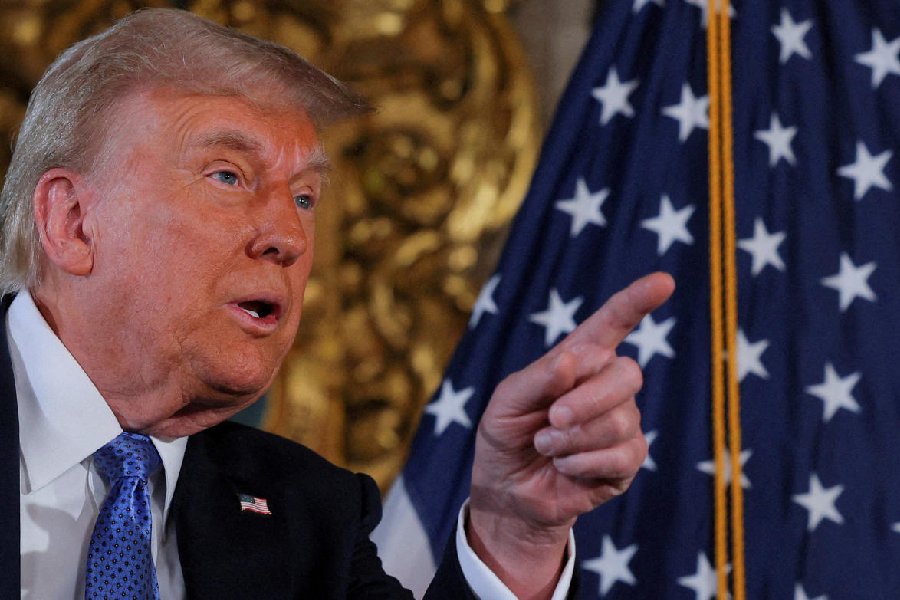An international team of astronomers on Wednesday announced the discovery of six distant objects that look like galaxies that they say should not exist under current theories of cosmology and galaxy formation.
The six galaxy-like objects, spotted through the James Webb Space Telescope, an observatory in space launched on Christmas Day 2021, appear as massive as the Milky Way galaxy only 500-700 million years after the Big Bang, the birth of the universe about 13.8 billion years ago.
“Galaxies like these should not have been able to form at such early cosmic times. There are too many stars in these galaxies too early,” Erica Nelson, team member and an astronomer at the University of Colorado in the US, told The Telegraph via email.
“Our model for cosmology underlies everything we think we know about the universe and it does not predict galaxies this big this early,” she said.
Nelson and her collaborators in Australia, Denmark, Spain and the US have described galaxies with stellar masses as high as 100 billion times that of the Sun which far exceed the expected masses of such early-period galaxies.
Their findings were published in the journal Nature on Wednesday. The finding that massive galaxies emerged extremely early in the history of the universe “upends what many of us had thought was settled science”, said Joel Leja, another team member and astronomer at Pennsylvania State University.
The Webb telescope is equipped with infrared sensors designed to detect light emitted by the most ancient stars and galaxies, allowing scientists to look back into time roughly 13.5 billion years ago.
Efforts to explain such massive galaxies so early would require changing current cosmology models or revising the scientific understanding of galaxy formation in the early universe.
“Either of these would require a fundamental shift in our understanding of how the universe came to be,” Leja said in a media release.
“We looked into the very early universe for the first time and had no idea what we were going to find. It turns out we found something so unexpected it actually creates a problem for science.” Nelson said it was possible that there was a “fast track” for galaxy formation in which the biggest galaxies form much more quickly than other galaxies.
“If even one of these galaxies is confirmed… it suggests there is something different than we thought about how the universe makes galaxies,” she said.
Astronomers say one of the objects appears to be a quasar powered by a supermassive black hole. But, Nelson said, this too would be “exciting” because the formation of supermassive black holes is also an unsolved problem in astrophysics.
The scientists say they cannot rule out yet that the other objects too are baby quasars. Nelson had discovered the first of the six objects during the first two weeks since JWST data began pouring in — a bright red but fuzzy dot in the JWST image.
An astrophysicist and team member Ivo Labbe in Melbourne, Australia, found more objects.











